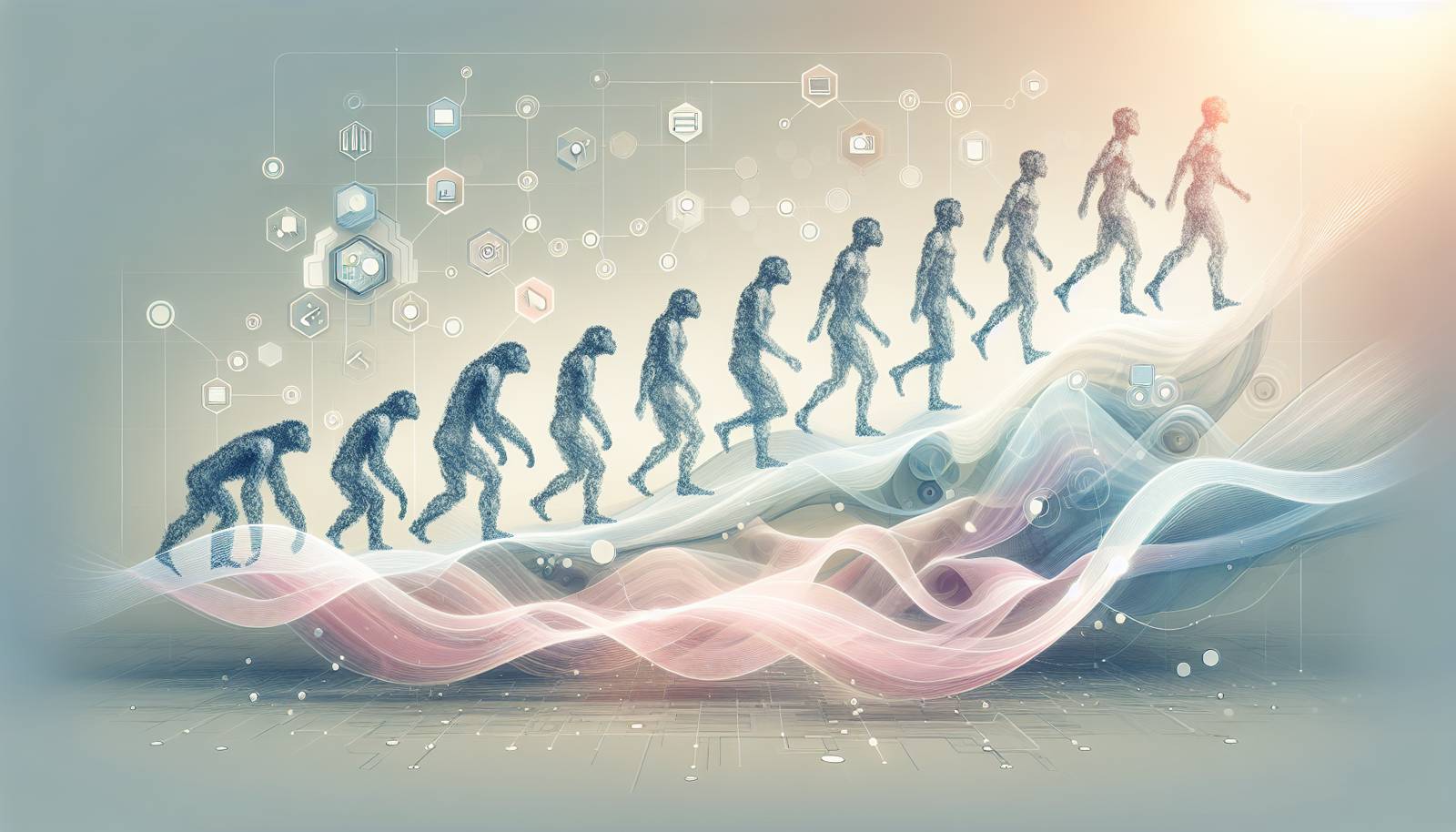
FAQ About The Evolution of Emojis in Digital Communication

What are emojis and how did they originate?
Emojis are small digital images or icons used to express ideas, emotions, or concepts in electronic communication. They originated in Japan in the late 1990s when Shigetaka Kurita designed a set of 176 symbols for NTT DoCoMo's i-mode, a mobile internet platform. These symbols were initially intended to convey information more efficiently on the limited screens of mobile devices.

How have emojis evolved since their creation?
Since their inception, emojis have significantly evolved in both complexity and usage. Initially, emojis were simple, pixel-based images, but they have since expanded to include a wide variety of detailed and colorful icons representing diverse emotions, objects, and symbols. The introduction of Unicode standardization in 2010 allowed emojis to be used consistently across different platforms and devices, further popularizing their use worldwide.

What is the cultural significance of emojis in digital communication?
Emojis play a significant cultural role in digital communication as they provide a non-verbal means of expressing emotions and intentions. They help bridge language barriers and enrich online interactions by adding emotional context that might be absent in text alone. Emojis have also become a form of cultural exchange, as new emojis are often introduced to represent diverse cultures, practices, and identities, thus promoting inclusivity.

How do emojis influence global online interactions?
Emojis influence global online interactions by facilitating more engaging and expressive communication. They enable users to convey tone and emotion quickly, which is crucial in a medium lacking non-verbal cues like facial expressions or tone of voice. This has made them popular in social media, text messaging, and email, contributing to more nuanced and personal communication across different languages and cultures.

Are there any negative aspects associated with the use of emojis?
While emojis are largely beneficial for enhancing communication, they can also lead to misunderstandings, as the interpretation of an emoji can vary widely among different cultures and individuals. Additionally, overuse of emojis can make messages appear informal or unprofessional, depending on the context. It is important to use emojis thoughtfully to ensure the intended message is communicated effectively.

What role does Unicode play in the development of emojis?
Unicode Consortium is crucial in the development of emojis as it standardizes emoji representation across different platforms and devices, ensuring that they appear consistently for all users. Unicode receives proposals for new emojis from the public and technology companies, which it reviews and approves based on factors like compatibility, expected usage, and cultural significance. Once approved, these emojis are included in new Unicode updates, making them accessible globally.

How are new emojis created and approved?
New emojis are created and approved through a process managed by the Unicode Consortium. Individuals or organizations can submit proposals for new emojis, which include evidence of the proposed emoji's anticipated use, cultural significance, and potential to fill existing representation gaps. After submission, Unicode reviews and votes on these proposals. Approved emojis are then included in the Unicode standard updates.

Can emojis change meaning over time?
Yes, emojis can change meaning over time, influenced by cultural shifts and trends in communication. Similar to language, the context and usage of an emoji can transform its significance with different social groups assigning varying meanings. This dynamic nature allows emojis to stay relevant and reflective of contemporary social interactions but can also lead to generational differences in interpretation.

What is the impact of emojis on language and literacy?
Emojis impact language and literacy by providing a visual complement to text, enhancing comprehension and emotional context. They can simplify communication, making it more accessible across language barriers. However, there is debate about their potential to erode traditional literacy skills by replacing verbal expression with pictorial symbols. The balance between emoji use and language is an area of ongoing study in linguistics.

How do businesses use emojis in marketing and communication strategies?
Businesses use emojis in marketing and communication strategies to create relatable and engaging content. Emojis can capture attention and convey messages quickly in crowded digital environments. Brands often use emojis to appear more approachable and relatable, fostering a connection with their audience. However, it's important for businesses to use emojis appropriately to maintain professionalism and respect cultural differences.

Are there any legal considerations regarding emoji use?
Legal considerations in emoji use include intellectual property rights and the potential for emojis to modify the interpretation of a text message legally. While emojis themselves are generally not protected by copyright, the proprietary design of emojis by companies can be. Furthermore, legal cases have arisen where emojis were considered part of the intent or meaning in agreements or messages, impacting interpretations in disputes.

How diverse and inclusive are the current emoji sets?
Current emoji sets are becoming increasingly diverse and inclusive, reflecting a broad spectrum of human experiences and identities. Emoji developers and Unicode have made strides in recent years to include representations of different skin tones, genders, and cultural practices. However, there is ongoing advocacy for further inclusivity to better represent global diversity and the range of modern identities and lifestyles.

What does the future hold for emojis?
The future of emojis is likely to involve even more personalized and expressive options as technology advances. With the development of augmented reality and more sophisticated AI, emojis might evolve to include interactive or animated elements. As digital communication continues to grow, emojis will likely remain a staple, adapting to new platforms and cultural contexts to remain relevant.

How do cultural differences affect emoji interpretation?
Cultural differences can significantly affect how emojis are interpreted, as symbolism and gesture meanings can vary widely across cultures. An emoji with a positive connotation in one culture might have a completely different or even offensive implication in another. Understanding these differences is crucial, especially in global communication, to prevent misinterpretation and to ensure messages are received as intended.

Why are some emojis more popular than others?
Some emojis become more popular due to their versatility, ease of use, and relevance in expressing common emotions or sentiments. Popular culture, trends in communication, and social media also play roles in boosting the popularity of certain emojis. For instance, the "tears of joy" emoji is widely used because it easily conveys a relatable and frequently expressed emotion.

How do emojis enhance emotional communication in digital media?
Emojis enhance emotional communication by adding a layer of expression that text alone cannot convey. They imitate facial expressions and gestures, providing emotional context to messages, which is particularly beneficial in digital conversations that lack physical presence. This helps prevent misunderstandings by clarifying the sender's emotional intent.

What are some challenges in creating universally understood emojis?
Creating universally understood emojis is challenging due to the diverse cultural, linguistic, and personal interpretations around the world. A symbol meaningful to one group may be misunderstood by another, making it difficult to design emojis that are universally relevant and non-controversial. Unicode addresses these challenges by focusing on broad and widely recognizable themes for new emojis.

Have emojis been adopted equally across different platforms and devices?
Emojis have been widely adopted across most digital platforms and devices, thanks to the standardization efforts by the Unicode Consortium, which ensures consistency in emoji rendering. However, slight variations can still occur in design and appearance due to platform-specific aesthetics. Overall, the adoption is generally uniform, with emojis playing a significant role in most digital communication environments.

How can individuals ensure effective communication using emojis?
To ensure effective communication using emojis, individuals should consider the context and audience of their message. It is important to use emojis in moderation and pair them with text to clarify meaning. Awareness of cultural differences and the potential for varied interpretations can help avoid misunderstandings. Engaging with feedback from recipients can also improve emoji usage and communication effectiveness.

What impact have social media influencers and celebrities had on emoji usage?
Social media influencers and celebrities have significantly impacted emoji usage by popularizing certain emojis and influencing trends in digital communication. Their wide reach allows them to shape how emojis are perceived and used across various platforms. This cultural influence often leads to increased visibility and adoption of specific emojis, impacting communication styles particularly among younger audiences.
